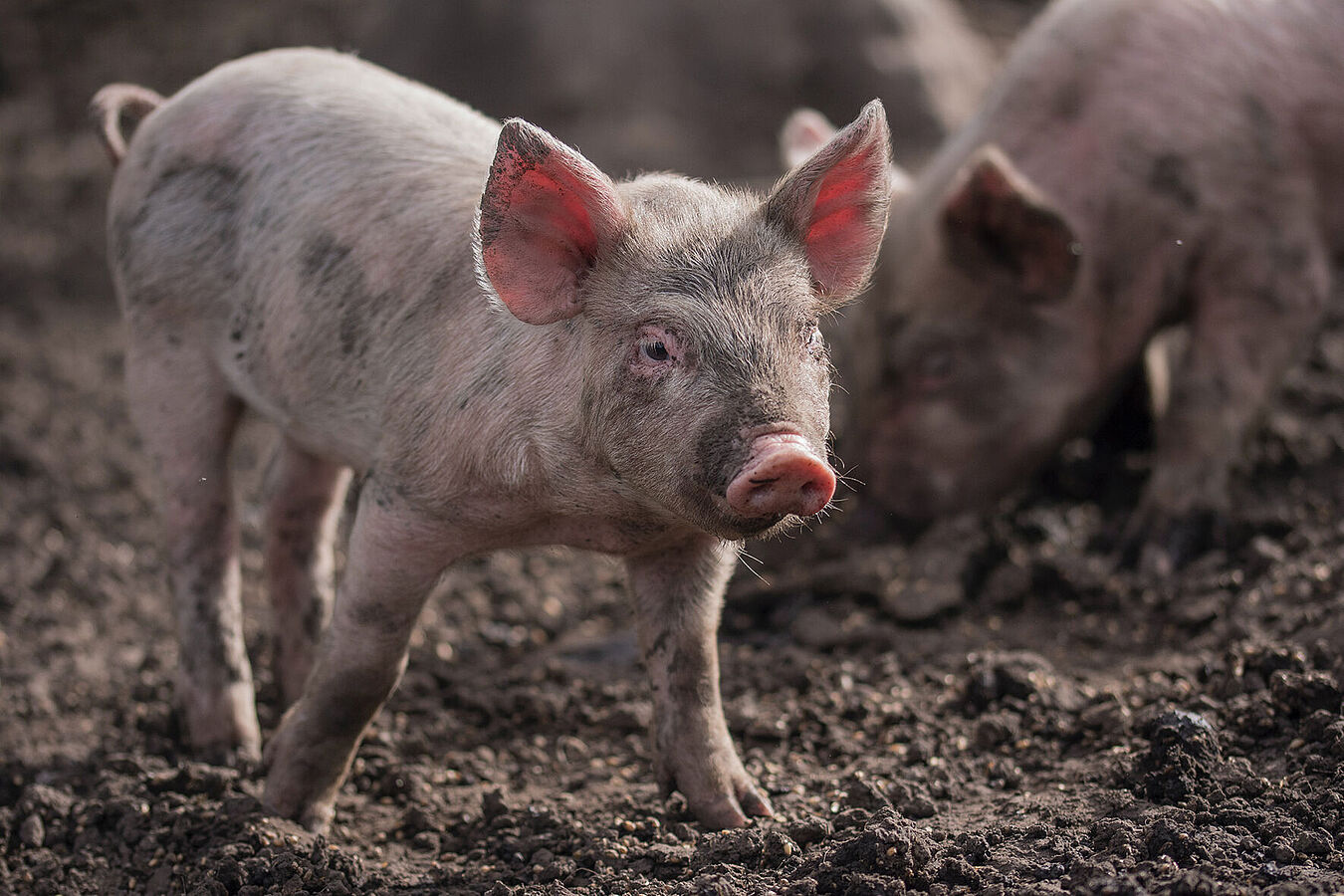Mammalian seminal fluid contains a variety of proteins secreted by the accessory sex glands that are important for the processes involved in fertilisation. One of these proteins, which is found in ungulates - and in particularly large quantities in boars - is the spermadhesin AQN-3. A science team from the Leibniz Institute for Zoo and Wildlife Research (Leibniz-IZW), the Humboldt University of Berlin (HUB) and the Leibniz Institute for Molecular Pharmacology has studied the protein and discovered unexpected properties that could help sperm remain functional until they reach the egg. The findings are published in the scientific journal “Chemistry and Physics of Lipids”.
The proteins in seminal fluid are important for the survival of male germ cells and their species-specific interactions with the components of the female genital tract. There are five different spermadhesins in the seminal fluid of ungulates. Spermadhesins are found in particularly large quantities in porcine semen. In order to understand the function of these proteins, which - as the name suggests - attach themselves to the sperm surface, the spermadhesins AWN and AQN-3, named after the letter code of the first three amino acids of the protein sequence, have so far been artificially produced in bacteria.
In a previous study, the scientific team led by Karin Mueller and Beate Braun from the Leibniz-IZW showed that AWN binds specifically to negatively charged lipids. However, these are primarily found on the half of the cell membrane facing the inside of the sperm cell. This raises the question of how the spermadhesins attach to the surface of the sperm? Since it is known from work of other scientific groups that AWN forms aggregates with AQN-3, it was now investigated whether AQN-3 binds to typical lipids on the outside of the sperm membrane, such as phosphatidylcholine and sphingomyelin. “Surprisingly, the applied model systems with lipid strips and vesicles showed that AQN-3 also binds selectively with negatively charged lipids, such as phosphatidic acid and various phosphatidylinositol phosphates,” explains Mueller. In addition, AQN-3 has a strong tendency to form aggregates with itself and other proteins.
Studies by other scientific groups describe yet another protein in the aggregates of native AWN and AQN-3 in seminal fluid, the protein pB1. "The pB1 protein belongs to a group of proteins that are known to bind to the phosphatidylcholine on the outside of the cell membrane in bovine sperm and thus have a stabilising effect," says Peter Müller from the Humboldt University in Berlin. It is therefore assumed that pB1 anchors the protective protein envelope of AWN and AQN-3 in the cell membrane of sperm through aggregate formation. Negatively charged lipids such as phosphatidylinositol phosphates serve, among other things, as signalling molecules during fertilisation,. If they are formed and released prematurely, they could be "intercepted" by spermadhesins until the sperm have reached the egg at the site of fertilisation.
Interestingly, the composition of the protein coat around the sperm is species-specific, so spermadhesins are the main component in seminal fluid only in porcine species. This raises the question of how their role is fulfilled in other species and whether their protective properties could be exploited in the application of assisted reproduction techniques in the context of species conservation.


